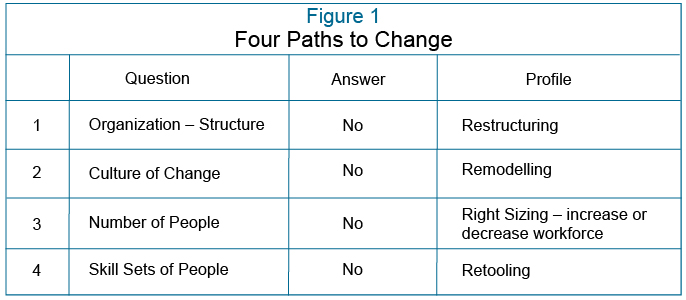The ship has set sail - who is steering?

As the political winds of change envelop city hall, how do we ensure that the focus of the new council is translated into the appropriate action plan for success? In the first article in this series (April 2011), we set out the need for the strategic planning process, and noted that there are a variety of approaches to strategic planning that lead to identifying the key priorities for the new term of council. Once established, how will a new council ensure that the vision is translated appropriately into a workable action- oriented plan – with measureable targets and specific performance expectations?
As you place your trust and faith in your administration, they in turn will rely upon the clarity of your instructions and the consistency of your commitment as a council. In addition, a significant amount will depend upon the resources that you, as a council, are prepared to commit to the success of this venture. Finally, and perhaps most importantly, success will become a measure of your “stick-to-itiveness” and not allowing yourself, as a council, to get distracted and unfocused. Too often, that lack of “stick-to-itiveness” will result in the process being derailed, despite having a solid strategic plan. Politics and, yes, personal ego can become big challenges in staying focused on the ultimate prize.
The intention of this article is not to provide answers to these issues, but simply to raise awareness of them and to ensure that you are prepared to address them in your own “local” way. Ensuring that the focus is kept on the “end goal” of the strategic plan may be the best way to stay on track – after all, it’s about building and shaping the success of your community!
Addressing the Challenges
The first article identified a number of questions related to organizational/structural/personnel issues. In this article, we begin to address those challenges in order that the operational plan (being the actual “what, how, and when” of the strategic plan) can move forward in an effective way. Are the operational objectives clear and specific? Are we using the typical shotgun approach, hoping to simply hit some portion of the target? Or, are we clearly seeking to hit the bull’s-eye by articulating the objectives in clear and unequivocal terms? For example: an operational objective that speaks about improving efficiency in a certain municipal service – is a rather generic objective that, without question, will cause some degree of difficulty when the challenge arises about the level of success or nature of the improvement. Being more specific by articulating that goal in the following manner should resolve any concerns about what it is we are trying to achieve:
That the customer complaints (in the specific service area) be responded to within 24 hours of receipt and the nature of the complaints be ranked in accordance with the approved council protocol ensuring that the complaints ranked as “A” priorities be resolved within five working days; “B” priorities within 10 working days; and “C” priorities within 20 working days. That the department provide quarterly progress reports on this objective.
The process of developing the operational plan is typically left with the administration or possibly a consultant – in concert with the administration and council. The focus on the operational plan and aligning it with the department’s business/service plan, as well as the annual budget exercise, is important to see that it receives the level of attention that will be necessary to ensure a measure of success. When the plan comes back to council for consideration, it will be the appropriate time for council to determine if there are sufficient resources allocated toward the attainment of the goals and objectives. The linkage with the annual budget (being the single most important policy decision that council undertakes on an annual basis) is an important consideration. Making the ever-important allocation of financial resources to these priorities will also help to ensure that the public understands the degree of importance that council places on this particular aspect of the plan and the desired impact it should have on the community in the future.
This process also enables council to gauge the organization’s readiness for the future. Is the operational plan stretching the organization? Is it building capacity in the organization for the future? The answers should provide an assessment of the organization’s readiness for change, and should provide a sense of whether the organization can accomplish the change, and whether it can also thrive and improve through the process.
One of the first components in the development of a strategic plan is defining or describing the desired end state. The second component requires an assessment of an agreed upon understanding and recognition of the current state. The operational plan is the road map between these two states. This road map should stimulate further analysis in support of the proposed direction. The analysis should consider the availability of the necessary resources including people and their respective skills, technology, and equipment, etc. In the analysis of the availability of people resources, weight should also be given to their depth (experience) and breadth (skills). In other words, do we have the right number of people to get the job done? Are the people we have in the right positions? Do we have a culture that supports and encourages change? The answers to these questions should point to potentially one of the four paths: Restructuring, Remodelling, Right Sizing or Retooling, shown in Figure 1.

This article focuses on profiles 1 and 2, restructuring and remodelling.
Restructuring
Restructuring is typically the revolutionary approach to change. It is predominantly a focus on the structure, and embodies a sense of urgency and upheaval to the organization. It will bring inherent financial and operational costs, but it also sends a clear message that the world is changing – and so are the demands and expectations across the entire organization.
Restructuring might be your answer when your organization has either the right people in the wrong places, or the wrong people in the wrong places. Generally, restructuring becomes the option of choice when you come to the conclusion that the structure and the people are no longer the right fit for what you hope to achieve.
Restructuring has some upfront costs to the organization, because tools such as severance packages and retirement incentives are often employed. This process appears on the surface to be a quick remedy to a situation, but when one considers the time involved in designing the new structure, out placing and recruitment activities, the time lag to achieve actual forward momentum can be significant. Remember that restructuring can be difficult to achieve if council is not clearly and solidly behind the process and supportive of those who are tasked with the responsibility to deliver such organizational change.
Remodelling
Remodelling is the evolutionary approach, which takes on a selective and focused change dynamic. It can be as subtle as adding some new responsibilities and duties to key personnel, or simply edging the culture of the organization forward through a series of policy changes. This approach demonstrates a degree of corporate stability, but a note of caution is in order: it is easy to slide backwards without a driving force and a senior champion in the organization.
Remodelling typically occurs when the organizational model is, for the most part, set, but may need to be tweaked in places. A minor change or two might possibly achieve the results you are seeking. Often, the people are the right fit, but may need a gentle reminder to get the proper focus. The changes in personnel are typically rather precise and focused – surgeon-like precision may be necessary, in the execution of these changes. An organization that recognizes some need for change is necessary but has a culture entrenched in past practices and is risk averse, may decide to look for new leadership that brings those traits to the table. New leadership may be able to instil a new culture more effectively than current leadership that is saddled with certain baggage. Unlike restructuring, the initial steps toward remodelling can happen relatively quickly. However, as the definition suggests, the achievement of the end state is evolutionary. It will take time and require council to exercise patience in the process.
Closing Thought
While each of these profiles lends itself to a certain intrinsic response, as illustrated in the chart above, it is critical to remember (as when dealing with any matters related to people) that no single answer is always right. The tool will allow you to develop a rough sense of the approach you may want to consider, and is ideally intended to stimulate the discussion. When engaging in this process, you may wish to utilize the services of a professional to assist with an examination of many additional factors that need to be explored before launching into a singular course of action.
At times, there may be several parallel strategies that are necessary, rather than one simple solution. We’ll explore some of the other options in the next instalment. MW
As published in Municipal World, July 2011
Joe Levack is a management consultant with over 20 years experience in the private and public sectors, specializing in all areas of labour relations and human resource management.
John Skorobohacz is currently the CAO for the Town of Innisfil and has been in municipal administration for over 28 years, working in both small and large municipalities.
Related resource materials:



